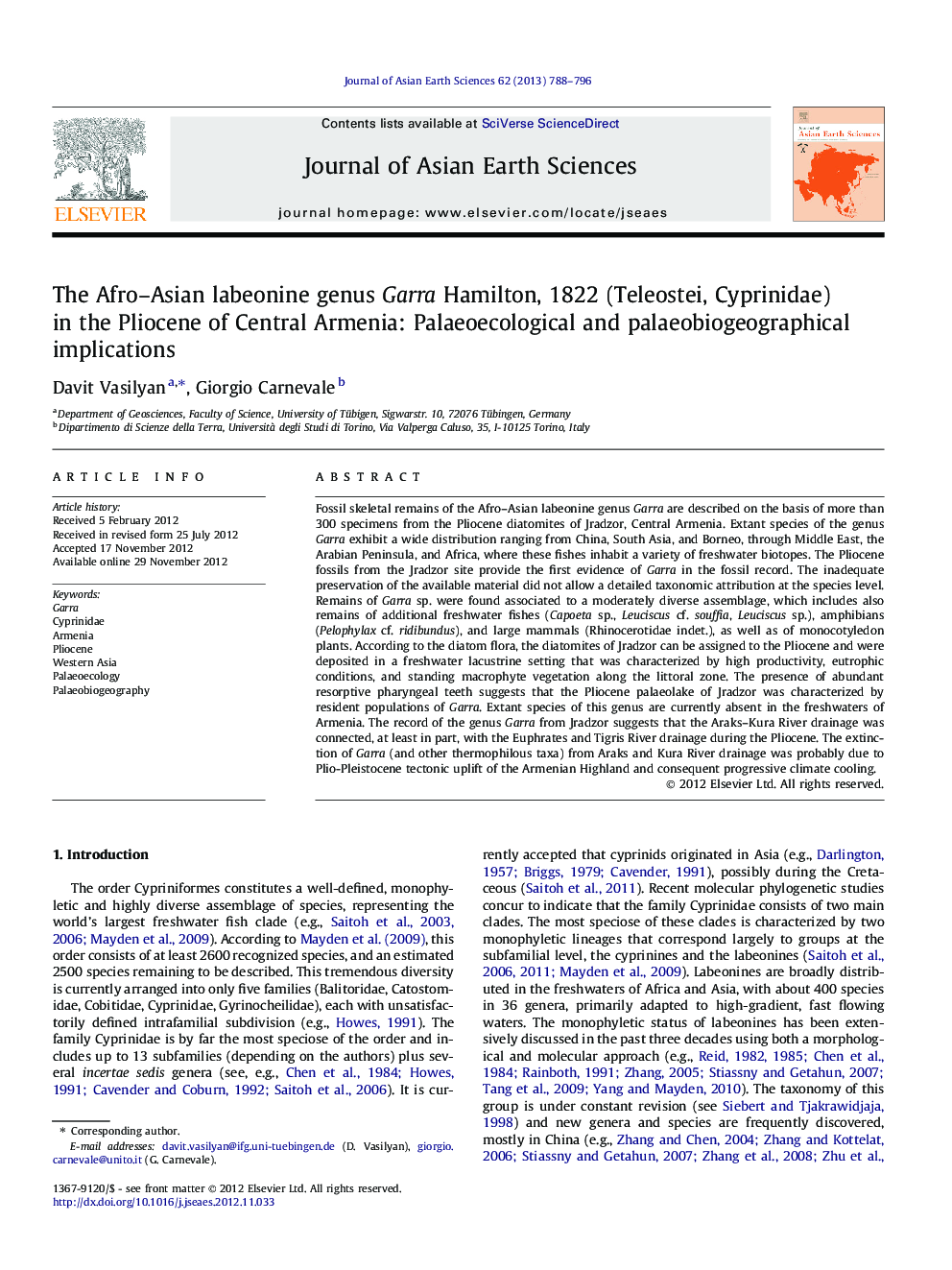| کد مقاله | کد نشریه | سال انتشار | مقاله انگلیسی | نسخه تمام متن |
|---|---|---|---|---|
| 4731317 | 1640403 | 2013 | 9 صفحه PDF | دانلود رایگان |

Fossil skeletal remains of the Afro–Asian labeonine genus Garra are described on the basis of more than 300 specimens from the Pliocene diatomites of Jradzor, Central Armenia. Extant species of the genus Garra exhibit a wide distribution ranging from China, South Asia, and Borneo, through Middle East, the Arabian Peninsula, and Africa, where these fishes inhabit a variety of freshwater biotopes. The Pliocene fossils from the Jradzor site provide the first evidence of Garra in the fossil record. The inadequate preservation of the available material did not allow a detailed taxonomic attribution at the species level. Remains of Garra sp. were found associated to a moderately diverse assemblage, which includes also remains of additional freshwater fishes (Capoeta sp., Leuciscus cf. souffia, Leuciscus sp.), amphibians (Pelophylax cf. ridibundus), and large mammals (Rhinocerotidae indet.), as well as of monocotyledon plants. According to the diatom flora, the diatomites of Jradzor can be assigned to the Pliocene and were deposited in a freshwater lacustrine setting that was characterized by high productivity, eutrophic conditions, and standing macrophyte vegetation along the littoral zone. The presence of abundant resorptive pharyngeal teeth suggests that the Pliocene palaeolake of Jradzor was characterized by resident populations of Garra. Extant species of this genus are currently absent in the freshwaters of Armenia. The record of the genus Garra from Jradzor suggests that the Araks–Kura River drainage was connected, at least in part, with the Euphrates and Tigris River drainage during the Pliocene. The extinction of Garra (and other thermophilous taxa) from Araks and Kura River drainage was probably due to Plio-Pleistocene tectonic uplift of the Armenian Highland and consequent progressive climate cooling.
► First fossil record of Afro–Asian labeonine genus Garra.
► Diatomite from Jradzor, Armenia originated in a lacustrine environment during the Pliocene.
► Lake was characterized by high productivity and eutrophic conditions.
► A part of Araks River was connected with proto-Euphrates during part of Neogene.
► Extinction of Garra from Araks–Kura River drainage was probably due to Plio-Pleistocene climate cooling.
Journal: Journal of Asian Earth Sciences - Volume 62, 30 January 2013, Pages 788–796